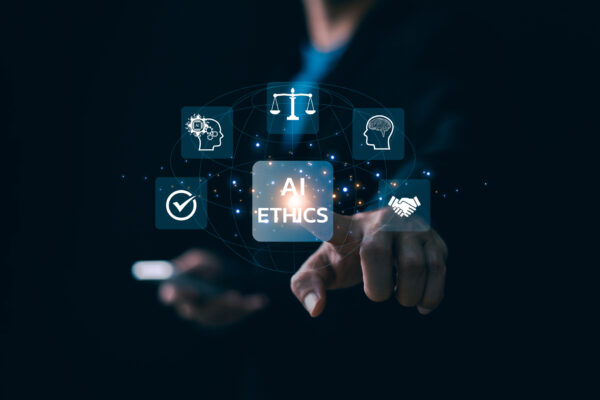In the world of AI, we often hear about “Responsible AI.” However, if you ask ten people what it actually means, you might get ten different answers. Most will focus on ethical standards: fairness, transparency, and social good. But is that the end of responsibility? Many of our AI solutions are built by enterprise organizations who aim to meet both ethical standards AND business objectives. To whom are we responsible, and what kind of responsibility do we really owe? Let’s dive into what “Responsible AI” could mean with a broader scope.
Ethical Responsibility: The Foundation of Responsible AI
Ethical responsibility is often our go-to definition for Responsible AI. We’re talking about fairness in algorithms, transparency in data use, and minimizing harm, especially in areas like bias and discrimination. It’s crucial and non-negotiable, but ethics alone don’t cover the full range of responsibilities we have as business and technology leaders. As powerful as ethical guidelines are, they only address one part of the responsibility puzzle. So, let’s step out of this comfort zone a bit to dive deeper.
Operational Responsibility: Keeping an Eye on Costs
At its core, AI tools are a resource-intensive technology. When we deploy AI, we’re not just pushing lines of code into the world; we’re managing data infrastructure, compute power, and – let’s face it – a budget that often feels like it’s getting away from us.
This brings up a question we don’t always want to ask: is it responsible to use up cloud resources so that the AI can write a sonnet?
Of course, some use cases justify high costs, but we need to weigh the value of specific applications. Responsible AI isn’t just about can we do something; it’s about should we do it, and whether it’s appropriate to pour resources into every whimsical or niche application.
Operational responsibility means asking tough questions about costs and sustainability—and, yes, learning to say “no” to AI haikus.
Responsibility to Employees: Making AI Usable and Sustainable
If we only think about responsibility in terms of what AI produces, we miss a huge part of the equation: the people behind it. Building Responsible AI isn’t just about protecting the end user; it’s about ensuring that developers, data scientists, and support teams innovating AI systems have the tools and support they need.
Imagine the mental gymnastics required for an employee navigating overly-complex, high-stakes AI projects without proper support. Not fun. Frankly, it’s an environment where burnout, inefficiency, and mistakes become inevitable. Responsible AI also means being responsible to our employees by prioritizing usability, reducing friction, and creating workflows to make their jobs easier, not more complicated. Employees who are empowered to build reliable, ethical, and efficient AI solutions ultimately deliver better results.
User Responsibility: Guardrails to Keep AI on Task
Users love pushing AI to its limits—asking it quirky questions, testing its boundaries, and sometimes just letting it meander into irrelevant tangents. While AI should offer flexibility, there’s a balance to be struck. One of the responsibilities we carry is to guide users with tailored guardrails, ensuring the AI is not only useful but also used in productive, appropriate ways.
That doesn’t mean policing users, but it does mean setting up intelligent limits to keep AI applications focused on their intended tasks. If the AI’s purpose is to help with research, maybe it doesn’t need to compose a 19th-century-style romance novel (as entertaining as that might be). Guardrails help direct users toward outcomes that are meaningful, keeping both the users and the AI on track.
Balancing Responsibilities: A Holistic View of Responsible AI
Responsible AI encompasses a variety of key areas, including ethics, operational efficiency, employee support, and user guidance. Each one adds an additional layer of responsibility, and while these layers can occasionally conflict, they’re all necessary to create AI that truly upholds ethical and practical standards. Taking a holistic approach requires us to evaluate trade-offs carefully. We may sometimes prioritize user needs over operational costs or support employees over certain ethics constraints, but ultimately, the goal is to balance these responsibilities thoughtfully.
Expanding the scope of “Responsible AI” means going beyond traditional ethics. It’s about asking uncomfortable questions, like “Is this AI task worth the cloud bill?” and considering how we support the people who are building and using AI. If we want AI to be truly beneficial, we need to be responsible not only to society at large but also to our internal teams and budgets.
Our dedicated team of AI and digital transformation experts are committed to helping the largest organizations drive real business outcomes. For more information on how Perficient can implement your dream digital experiences, contact Perficient to start your journey.

